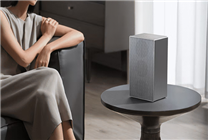Samsung Galaxy S27 Ultra’s Camera Specs Influenced by Apple iPhone 18 Pro Max
Summary:
- Samsung’s Galaxy S27 Ultra main camera specifications are closely tied to the innovations of Apple’s iPhone 18 Pro Max.
- The S27 Ultra will adopt new sensor technology while introducing novel facial recognition features.
- Samsung aims to ensure competitiveness by keeping hardware costs minimal.
The ever-evolving smartphone landscape is marked by fierce competition, with companies like Samsung and Apple constantly scrutinizing each other’s innovations. Recent insights have surfaced indicating that the specifications of the Samsung Galaxy S27 Ultra’s main camera may be influenced by the upcoming Apple iPhone 18 Pro Max.
Camera Specifications: A Game of Cat and Mouse
According to a prominent blogger, the Galaxy S27 Ultra may adopt a 200-megapixel sensor measuring 1/1.12 inches if the iPhone 18 Pro Max utilizes a 1/1.14-inch CMOS. If Apple keeps its existing 1/1.3-inch CMOS with a variable aperture, Samsung is likely to retain its current configuration, which includes a 200-megapixel sensor with a 0.6μm pixel size.
This strategic approach reflects a competitive mindset: Samsung is seemingly focused on not spending "a penny more on hardware," a sentiment that indicates a reactive rather than proactive stance in technology development. Such a tactic may be perceived as lacking innovation, as the company appears to mirror Apple’s advancements rather than leading the market.
Innovative Facial Recognition: Introducing Polar ID
In addition to camera developments, Samsung is prepared to unveil an innovative facial recognition technology named Polar ID. Set to debut with the Galaxy S27 Ultra in 2027, this feature seeks to diminish reliance on bulky infrared hardware traditionally necessary for 3D facial scanning. Instead, it aims for a more streamlined solution that enhances user experience.
Leaked information suggests that the Polar ID technology will integrate a proactive ISOCELL Vizion sensor and a “BIO-Fusion Core” security module, allowing for rapid unlocking times of approximately 180 milliseconds. The anticipated performance of this technology promises not only speed but also heightened security, with the ability to effectively distinguish between genuine users and deceptive unlocking methods like photos or videos.
Enhanced Security Features
One of the crowning achievements of the Polar ID technology is its potential to significantly improve facial recognition capabilities. Utilizing advanced polarized light technology, it strengthens the device’s defenses against spoofing tactics, ensuring that users can enjoy a secure and efficient unlocking experience. This level of innovation aims to position Samsung favorably against competitors, especially as facial recognition becomes a standard feature in modern smartphones.
Conclusion: The Competitive Landscape Ahead
As we look toward the future of smartphones, the tug-of-war between brands like Samsung and Apple continues to impact hardware choices and consumer expectations. The Galaxy S27 Ultra is set to showcase impressive capabilities, particularly in photography and security, but its development seems to be heavily influenced by its primary competitor.
While rate of technological advancement in both companies may lead consumers to question long-term innovation strategies, Samsung’s attempts to mirror Apple’s direction indicate an industry constantly evolving but perhaps not always leading. This is a key moment for Samsung as it aims to differentiate itself in a crowded marketplace while ensuring its offerings remain competitive.
In a domain where every specification counts, the Samsung Galaxy S27 Ultra could redefine what users expect from high-end smartphones. As the release date approaches, all eyes will be on this flagship device to see how it measures up in performance, security, and overall innovation.
By anticipating these changes and adjusting its strategies, Samsung might not just be playing catch-up but could also chart a new direction for the future of smartphone technology.









